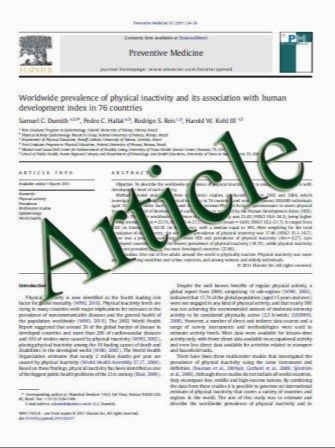Relationship of Pancreatic Mass Size and Diagnostic Yield of Endoscopic Ultrasound-Guided Fine Needle Aspiration
- نوع فایل : کتاب
- زبان : انگلیسی
- مؤلف : Ali A. Siddiqui Lauren J. Brown Shih-Kuang S. Hong Rossitza A. Draganova-Tacheva Jason Korenblit David E. Loren Thomas E. Kowalski Chara
- چاپ و سال / کشور: 2011
Description
Background Endoscopic ultrasound-guided fine needle aspiration (EUS-FNA) is central to discerning the diagnosis of solid pancreatic tumors through tissue acquisition. Test performance is affected by a number of factors including location of mass within the pancreas, presence of onsite cytology technologist, and number of passes with the needle. The influence of tumor size has not been well studied. Aim The objective of the current study was to determine whether the size of mass affects the diagnostic accuracy for solid pancreatic lesions aspirated under EUS guidance. Methods Data were collected retrospectively on all patients with solid pancreatic masses undergoing EUSFNA from June 2003 to August 2010. The cytology samples were reported as positive, suspicious for malignancy, atypical, negative, or nondiagnostic. The gold standard for a cytological diagnosis was histological confirmation or clinical follow-up of more than 6 months with repeat imaging. Patients were divided into five groups based upon lesion size as follows: (a) less than 1 cm, (b) 1–2 cm, (c) 2–3 cm, (d) 3–4 cm, and (e) greater than 4 cm. Performance characteristics of EUS-FNA including sensitivity, specificity, and accuracy were compared for each group. Accuracy was defined as the ratio of the sum of truepositive and true-negative values divided by the number of lesions. Results We identified 583 patients with solid pancreatic lesions in which EUS-FNA was performed and adequate cellularity was obtained (47% men, mean age 65 ± 1.4 (SE) years). Overall, 486 (83%) of lesions were pancreatic adenocarcinoma, 18 (3%) were neuroendocrine tumors, 12 (2%) were lymphomas, and 67 (12%) were benign lesions. The median size of the mass was 3 cm (range, 0.5–7 cm). A mean of 4.9 passes (range, 1–9 passes) was needed to obtain adequate samples from lesions. The overall yield of obtaining adequate samples for diagnosis was 85%. When stratified by size, the EUS-FNA sensitivity for lesions with size\1, 1–2, 2–3, 3–4, and[4 cm was 40, 75.9, 86.9, 93.2, and 91.6%, respectively; EUS-FNA sensitivity strongly correlate with tumor size (p\0.001). Similarly, the accuracy of EUS-FNA increased as lesion size increased, ranging from 47% for tumors less than 1 cm to 88% for tumors greater than 4 cm (p\0.05). Location of tumor and number of needle passes did not significantly influence EUS-FNA performance characteristics. Conclusions The sensitivity and diagnostic accuracy of EUS-FNA for solid pancreatic lesions is strongly correlated with tumor size. Sensitivity and accuracy decrease significantly for tumors that are smaller than 1 cm.
Dig Dis Sci DOI 10.1007/s10620-011-1782-z Received: 31 January 2011 / Accepted: 4 June 2011


